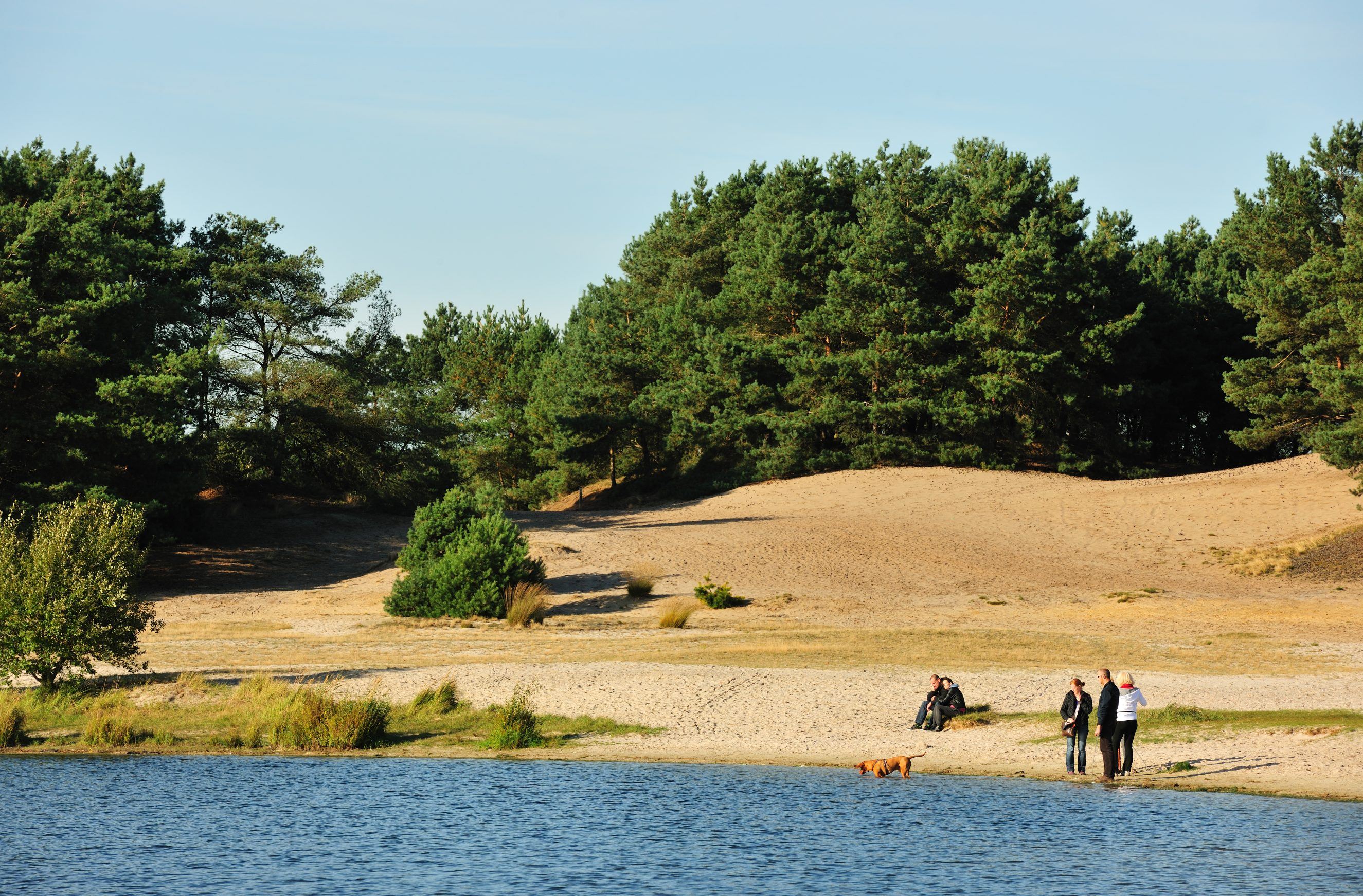The Lommel Sahara: a landscape of sand, forest and industrial history

Located just outside the city of Lommel in Limburg, the Sahara is a 193-hectare area characterised by pale sand, pine forest and a clear blue lake. Despite its name, the landscape is not a natural desert but the result of past industrial activity.
Between 1920 and 1925, sand extraction created the central lake. At the same time, the zinc factory at Lommel-Werkplaatsen (operational from 1902 to 1940) caused widespread vegetation loss through air pollution, leaving a bare and sandy terrain.
After the Second World War, reforestation began. Pine trees were planted and traditional brushwood hedges (mutsaards) were used to prevent sand drift. These measures stabilised the landscape and encouraged the development of the current mix of dunes, woodland and heathland. As part of the Bosland National Park, the Sahara is included in the Natura 2000 network because of its ecological importance.
Flora & fauna
As well as being a popular area for walking and cycling, the Sahara is home to a wide variety of flora and fauna. Birds such as grebes, ducks and swans inhabit the lake, while the surrounding area provides a habitat for rare mosses, lichens, grasses, ants, beetles, bees, digger wasps and butterflies. The natterjack toad, known for its preference for sandy habitats, is also found here.
The area is also home to the endangered ladybird spider, sometimes called the "panda of spiders" because of its distinctive appearance. This species is only found in a few places in Belgium and the Netherlands. The Sahara also lies within the known range of Flanders' only pair of wolves - Noella and Maurice - who may be expecting new offspring at the time of writing.
Filming location
The visual appeal of the area has led to it being used as a filming location for several Belgian productions, including Frits & Freddy, Tabula Rasa and The Team. Visitors can explore the landscape from a panoramic viewing tower and a footbridge over the Kempisch canal, offering views of the dunes, heathland and water.
The site also has an industrial heritage. It contains the remains of a former explosives testing facility operated by Poudreries Réunies de Belgique, once one of Belgium's largest arms manufacturers. Structures such as blast shelters, safety pyramids and a demolition pit can still be seen in the landscape.
With geological features dating back to the Late Ice Age (around 14,000 years ago), the Lommel Sahara illustrates the interaction between natural processes and human influence. It represents a combination of post-industrial transformation and ecological recovery.
This article is part of a series looking at exceptional destinations throughout Belgium that are perfect for a day out. |
|---|
#FlandersNewsService | © PHOTO VILDAPHOTO
Related news

